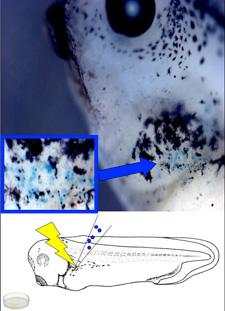Organ Regeneration: Pronephric/Embryonic Kidney Regeneration

The objective of this project is to understand a novel aspect of organ regeneration: the replacement of injured renal tissues. Accordingly, members of our lab are examining the mechanisms utilized to replace the embryonic excretory system. For centuries researchers have puzzled over how body parts are created and patterned during development and, in some instances, are able to regenerate after damage, loss, or injury. Despite much progress in these areas of study, the underlying mechanisms mediating organ regeneration continues to be central to scientific discussions. To begin to elucidate the potential regenerative processes of renal tissue, our laboratory examines the processes and events necessary for regenerating the relatively simple embryonic kidney, the pronephros. Capitalizing on the advantages our model system, combined with our previously described interests in nephrogenesis (kidney development), we aim to investigate the processes used during the regeneration and patterning of a simple organ system. Because the lab is dedicated to merging molecular and embryologic approaches to better understand the mechanisms controlling the formation of complex structures, this research will provide pivotal information necessary to advance our current understanding of the common themes found in both renal development and regeneration. Our preliminary studies demonstrate the embryonic kidney has the capacity to repair itself after mechanical injury. Thus, we see a tremendous opportunity to build on this work in order to gain novel insights into a problem of high clinical and basic interest: organ regeneration using a relatively simple, but highly versatile, renal model system.
Since the regeneration of tissues and organs has been shown to require several critical steps including: 1) controlled cell proliferation, 2) proper differentiation of cell types 3) and morphogenesis into a functional structure, we now aim to characterize the regenerated 'renal' tissue observed. The long-range goal of the laboratory is to understand, at the molecular level, the mechanisms underlying the regulation of cellular behaviors used to create organs. To address the current gap in the literature, and have a more complete understanding of pronephric tissue restoration, we are now examining the subset of genes and mechanisms used during renal regeneration using a powerful combination of disciplines including: embryology, molecular biology, developmental biology, and biophysics.
An example of a manuscript published in collaboration with the Levin lab describing this type of work:
- Blackiston, D.J., McLaughlin, K., and Levin, M. (2009) Bioelectric controls of cell proliferation: Ion channels, membrane voltage, and the cell cycle. Cell Cycle. 8(21) 1-10. (Cover)
If you want to learn more about this project, please contact Kelly McLaughlin.